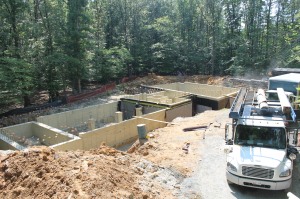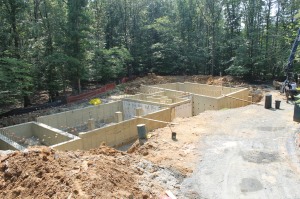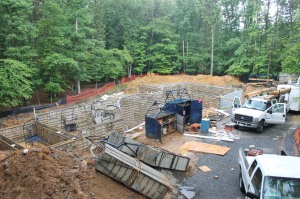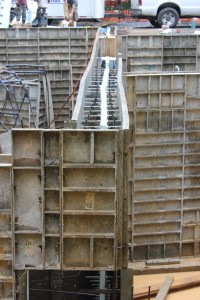The final slabs were poured this month at the Clifton Concrete home which completed Bartley Corp’s scope of work! Although a complex project overall, with ease, the concrete flatwork crews prepped the garage slab, first floor slab, and exterior concrete. The grade beams, rebar and poly installed in the garage slab are easily seen from the time-lapsed photos. A concrete pump was used to place the concrete inside the walls of the first floor home. Bartley crews used powered trowel machines to finish the concrete surface followed by soft cutting the construction joints. Broom finishes were used on the exterior concrete stoops and slabs.
We are proud to complete yet another concrete home and continue to be the leaders in concrete homes in the Washington DC metropolitan area. Learn more about the benefits of concrete homes at: https://bartleycorp.com/residential-concrete-foundations/concrete-homes/
If interested in a concrete home, please contact us so we can connect you with a local builder familiar with concrete homes.










































































